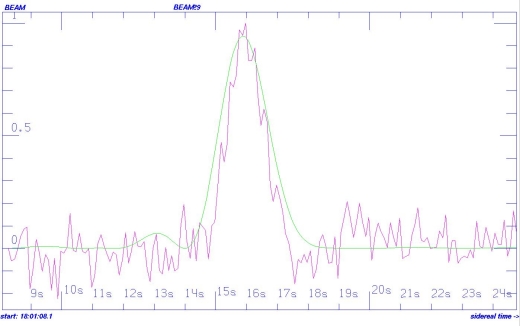A Brief History of Things that Haven't Been ET
Position of HD 164595 in the constellation Hercules
With apologies to Dr Stephen Hawking for the title.
The media is running amuck with stories of an ET signal from HD 164595. It's an intriguing concept as HD 164595 is rather close to our sun on the main sequence with at least one known planet. However this outburst is unlikely to be from another civilization for a number of reasons.
First, let's look at few more promising ET candidates that turned out to be more regular natural phenomena. The most famous is probably Percival Lowell's martian canals. In the early 20th century photography was still in it's infancy so many astronomers still did visual observing. This combined with the human ability to insert patterns where none exists led Lowell to publish his findings as a civilization building canals. Not to fault him entirely as Mars does actually have a dynamic and constantly moving landscape but it's due to seasonal dust storms, not martians irrigating their crops.
The next promising candidate was the discovery of pulsars in the 60s. The first pulsar was found to pulse at 1.33 second intervals in the radio part of the spectrum. Antony Hewish and Jocelyn Burnell ruled out human made interference and jokingly named the radio source LGM-1 for "little green men." They didn't actually think the radio signal was from some far off alien intelligence, the name was just a joke. However popular media at the time certainly ran with that idea. Later, after more of these regular pulsing radio sources were discovered it was surmised they were rapidly rotating neutron stars. You know, just the corpses of long dead massive stars. Nothing terribly exciting there at all. Sarcasm heavily implied here in case you didn't pick up on that.
One of the more recent "it might be aliens" discoveries were so called perytons. They were only detected by the radio telescope at Parkes and only there since 1998. All sorts of theories were tested and after other radio telescoped failed to detect the signal and astronomical sources were excluded the team started to focus in on local phenomena. It turned out to be the observatory's microwave oven, I kid you not.
So with the colorful history of discoveries that might have been ET let's look at the HD 164595 signal. It's a strong microwave spike. So strong infact some have theorized that it could only be produced by a civilization that could harness the entire output of their parent star. It's rather unlikely that something capable of such engineering would still be using microwave transmission for communication. The signal also also isn't spectrally narrow like one would suspect an intentional transmission to be. There's also the fact that it doesn't particularly look like something you'd expect intelligent beings to be sending out. No obvious patterns. The argument could be made for it to be encrypted or encoded but if you're trying to get a neighboring star system's attention you probably want them to be able to understand it. Sure, it could have not been intended for intercept but why else would ET's be blasting out huge microwave bursts? An alien intelligence might use some mathematically significant signal or something else obviously artificially generated as a beacon to stand out against the noise. Random spectrally wide microwave bursts don't really do that. In fact, I'd say pulsars would have been a better candidate for SETI than this signal back in the day as their signals seemed to tick more boxes on the "might be ET" checklist. Sure, HD 164595 could be another intelligent life form trying to communicate with us but that requires extraordinary evidence. The signal could just as easily be Carl microwaving his burrito again.

The suspect signal from the paper
Simplest explanation is that it's some natural phenomena we don't fully understand. We have observed exactly one star up close and personally and have in depth experience with one solar system. There is a lot we don't quite understand yet. This isn't some smoking gun for aliens as the media is screaming about. It certainly warrants further study though.
